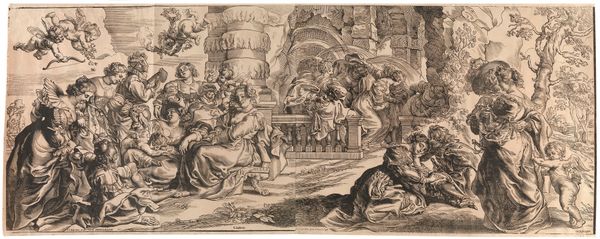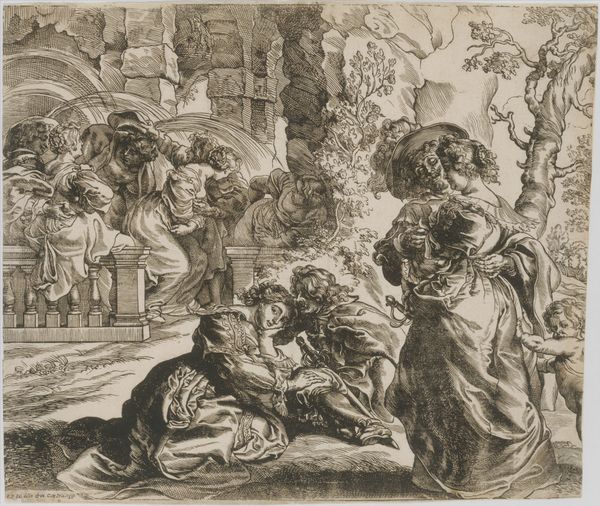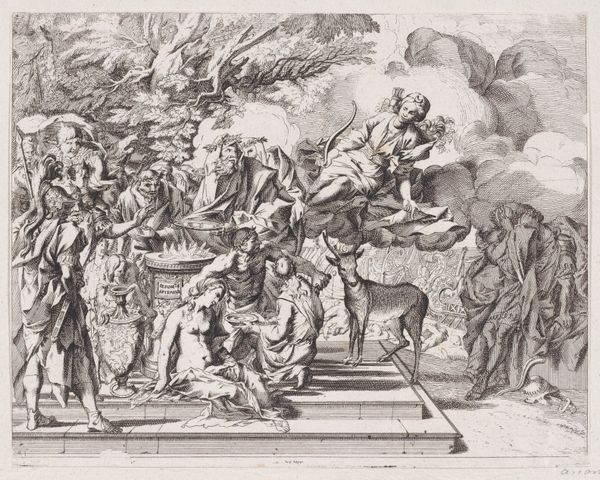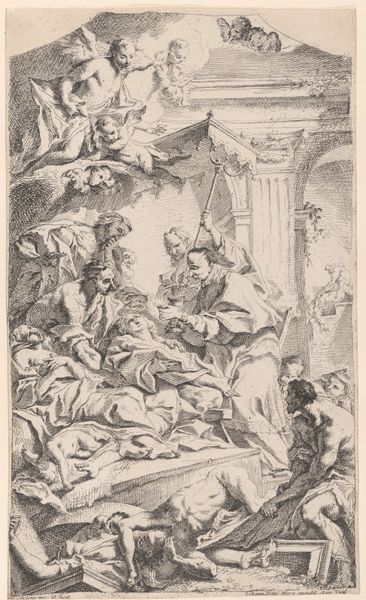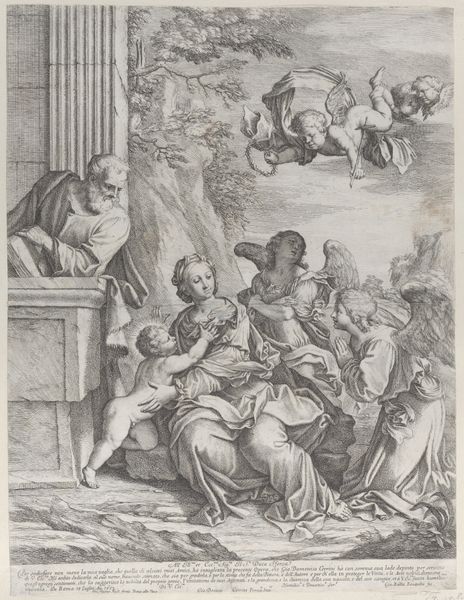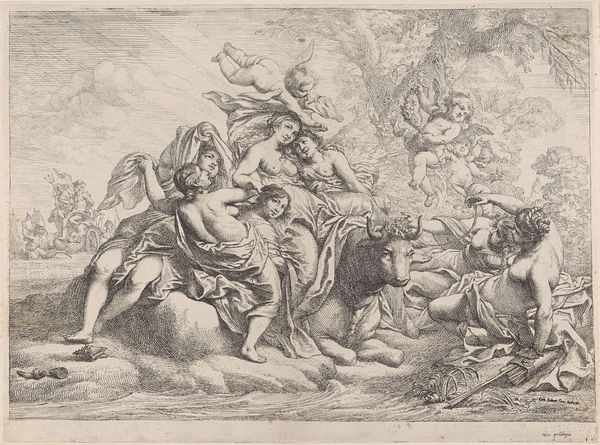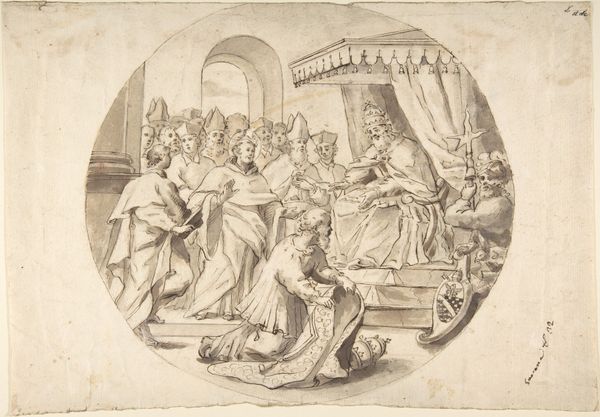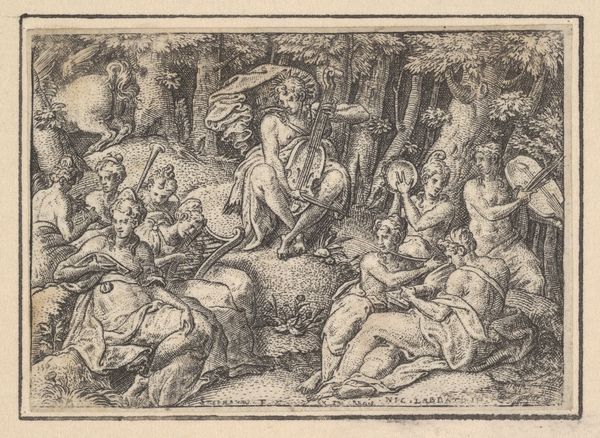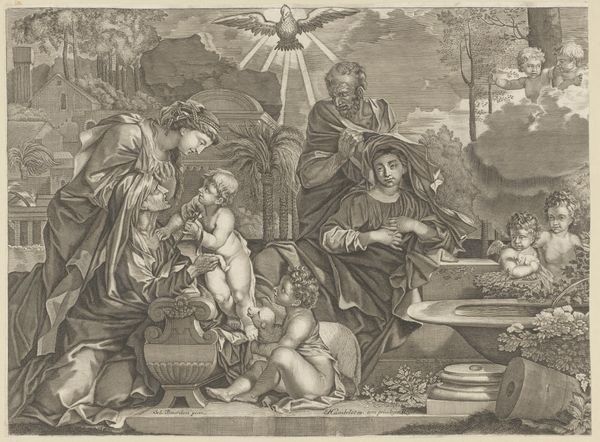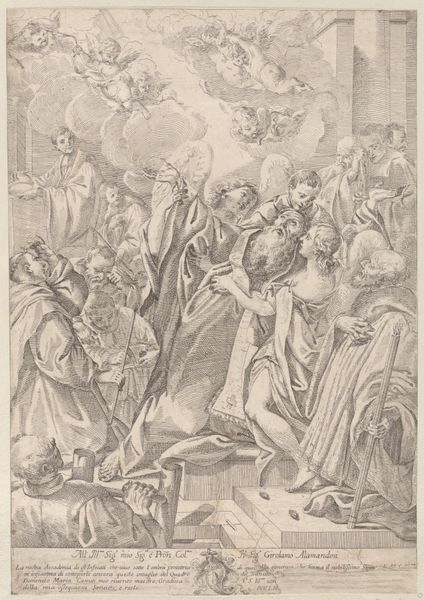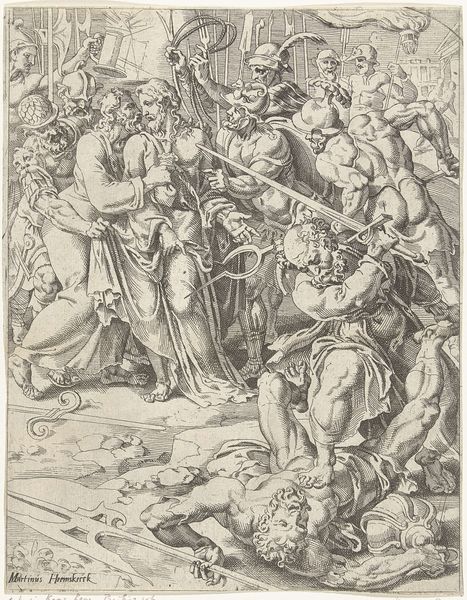
drawing, print, engraving
#
drawing
#
ink drawing
#
allegory
#
baroque
# print
#
pencil drawing
#
genre-painting
#
engraving
Dimensions: Sheet: 18 1/4 x 23 3/4 in. (46.4 x 60.3 cm) Mount: 22 x 28 in. (55.9 x 71.1 cm)
Copyright: Public Domain
Curator: Up next, we have "The Garden of Love (left block)", an engraving made in the 1630s, by Christoffel Jegher. You get a kind of languid feeling from it right away, don't you? Editor: Yes, exactly! There's a real sense of… dreamy ennui. The way the figures are draped and clustered together gives an impression of indolence, yet their elegant attire speaks to an environment of coded rituals. The cupids, however, hint at an underlying mischief, disrupting the serenity. Curator: The composition itself is really interesting, isn’t it? It almost feels claustrophobic. These people are practically piled on top of each other. Editor: It is, and that’s part of its appeal! Think about what gardens meant at that time, enclosures of the most artful kind, spaces set aside for particular classes. Consider how the engraver chose to render the classical orders behind this tableau of fashionable ladies and gentlemen. Are they indicators of something deeper than superficial pleasure-seeking? What happens when desire exists primarily as image? Curator: Hmmm. Maybe. The details are pretty amazing when you get close. The clothes, the way light falls, like little spot lights across the faces. Jegher definitely had an eye for rendering luxurious fabrics. I find that pretty exciting to consider because the printing process here demands such precision! Editor: I agree. It’s clear that symbolism and allegory were significant to those viewing prints at this time. Gardens historically are the sites of significant encounters. I find it fascinating how artists will render explicit themes like "Love" in such subtly complicated packages! It feels like the work’s way of drawing viewers to look both within and beyond their cultural understandings of this theme, maybe prompting us to imagine the future it anticipates, but also to consider what its symbols leave behind. Curator: Absolutely, the print really gets your gears turning. It kind of begs the question, “Is this paradise, or a beautiful trap?” Editor: Precisely. In contemplating such complexities, the print endures.
Comments
No comments
Be the first to comment and join the conversation on the ultimate creative platform.
